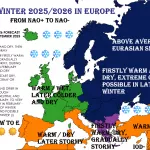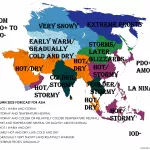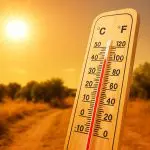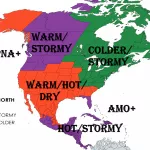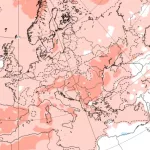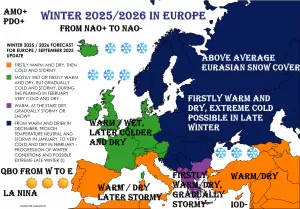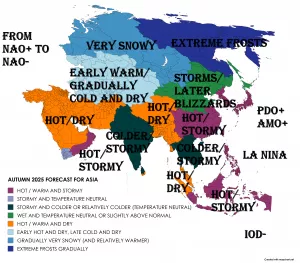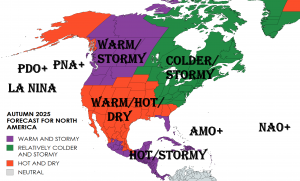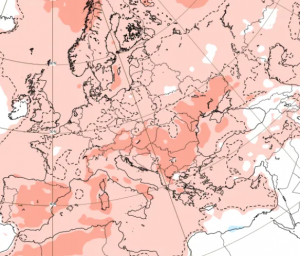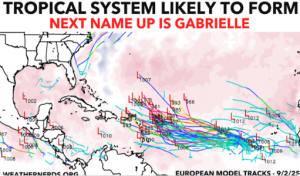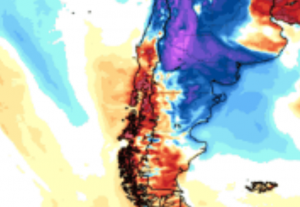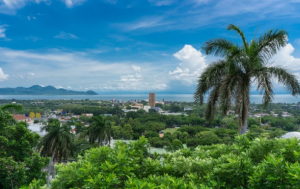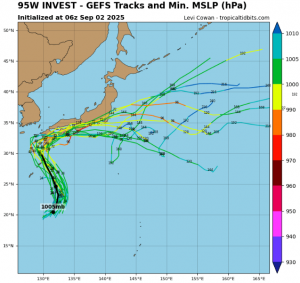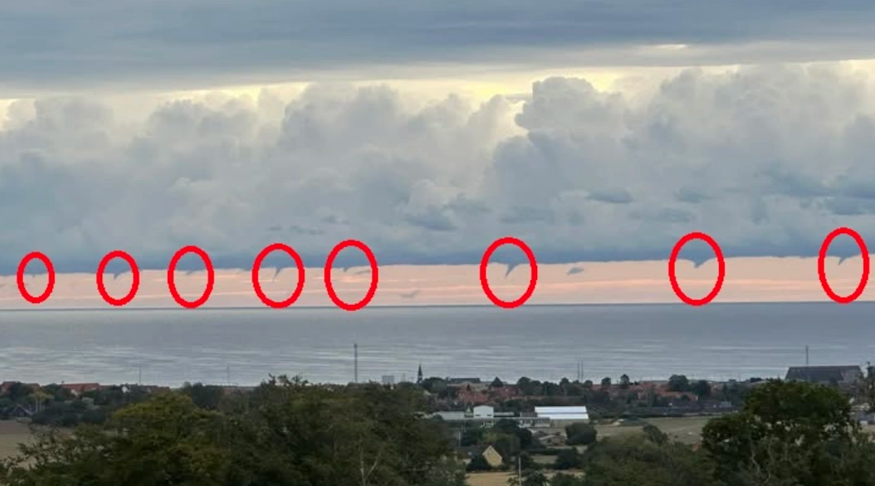
A rare and spectacular atmospheric phenomenon occurred over the Baltic Sea, where multiple waterspouts formed simultaneously between Poland and Denmark. Observers reported a cctuplet formation — six distinct tornado-like columns of rotating water — making this event extremely unusual and visually striking.
Waterspouts typically develop under intense convective activity, where unstable air masses, high humidity, and strong vertical wind shear combine over warm water surfaces. In this instance, the Baltic Sea’s surface temperatures and local weather conditions provided the perfect environment for multiple waterspouts to form at the same time, a phenomenon rarely documented in modern meteorology.
The formation of six waterspouts simultaneously presents both a scientific rarity and a maritime hazard. While waterspouts over the Baltic Sea are usually weaker than their tropical counterparts, such a cluster increases the risk to shipping, small boats, and coastal infrastructure. Mariners in the area were advised to exercise extreme caution, avoid the affected zones, and monitor updates from local meteorological authorities.
Photographs and drone footage of the event captured the parallel spiraling columns, emphasizing the dramatic nature of this atmospheric anomaly. Meteorologists are reviewing the event to understand how local sea conditions, wind shear, and convective dynamics aligned to produce this rare cctuplet waterspout formation.
In summary, the simultaneous formation of six waterspouts over the Baltic Sea between Poland and Denmark is a meteorological rarity, combining spectacular visual impact with potential maritime hazards, and highlighting the complex interactions of air, sea, and weather in the region.

Source: The Watchers, https://watchers.news/2025/08/22/rare-octuplet-waterspouts-form-baltic-sea-poland-denmark/, ICWR

